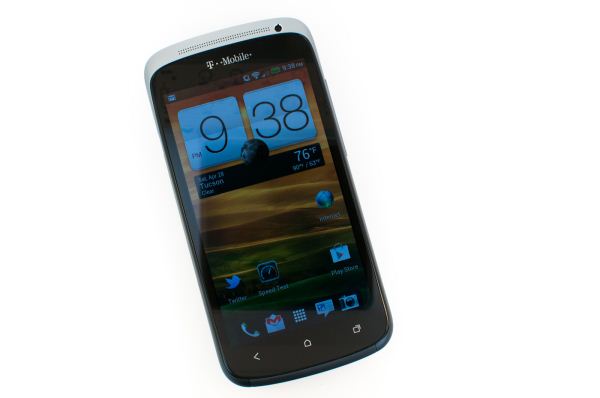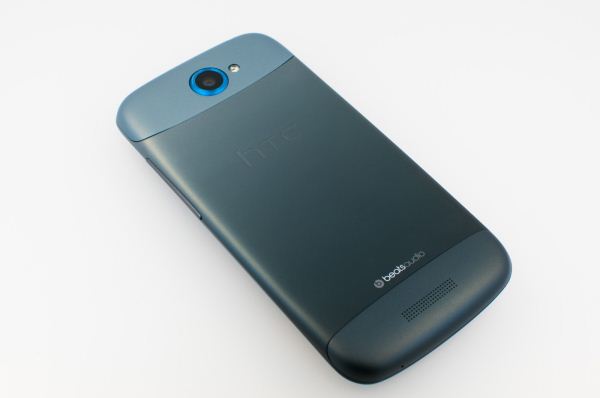HTC One S Review - International and T-Mobile
by Brian Klug on July 17, 2012 9:30 AM ESTIt took me a while to finish the One S review, partially because honestly I didn’t want to be done with it. Ok, well that's part of it, truth be told it took me far too long to finish the One S review, but I have some good excuses - a month full of abrupt life changes, a move across town, and a number of trips to exciting places covering the SGS3 announcement, Google I/O, and Windows Phone 8 all seemed to preclude hitting post on the One S review. The whole time, I've been using the T-Mobile One S with my own T-Mobile SIM and plan (the magical $30/mo prepaid one with unlimited SMS, 5 GB of full speed data, and 100 minutes) since getting it, and the device is almost always in my pocket alongside either the One X, SGS3, or Galaxy Nexus with my other AT&T line.
If you’re a T-Mobile customer in the USA, there’s no doubt about it that the HTC One S is the current number one or two device out there, thanks in part to that combination of DC-HSPA+ and new 28nm SoC. Even now that T-Mobile has the Samsung Galaxy S III, the One S still has a place at the top of the carrier’s lineup for shoppers that aren’t looking for the largest device, or value the metal construction. Since both are based on the same SoC, the differentiating factors really come down to display, camera, and other features. SGS3 obviously includes the bigger and better display, but HTC feels like it holds the upper hand in camera and construction. The rest is just personal preference. For international shoppers, their particular One S gets the plasma sputtered metal case in addition to none of the T-Mobile software preload.
Really the differentiator is the display, and LTE. With regards to the display, I initially thought that another 4.3" qHD SAMOLED display with PenTile would immediately turn me off, but HTC has done the best job I’ve seen thus far of getting that particular panel to a place where it doesn’t have a weird tint at every brightness level or insane amounts of sharpening. It blows my mind that Samsung can't get its own AMOLED panels tuned this well. With regards to LTE, there are still a number of carriers out there who don’t have LTE, but are instead looking to improvements on WCDMA to both increase capacity and deliver higher throughput. In my neck of the woods and other similar places where there's no AT&T LTE coming for the foreseeable year or so, going to a carrier with DC-HSPA+ in the interim does make some sense.
I really have to go back to what I started talking about in the first section - the One S has an absolutely phenomenal in-hand feel thanks to the combination of both that metal construction, and the center taper. Even in the supplied case, the device sort of fades away in the pocket in a way that is starting to become depressingly uncommon as OEMs push into much larger display sizes and form factors.












97 Comments
View All Comments
metafor - Tuesday, July 17, 2012 - link
The screens on just about every Android phone of recent has been at least ~40% larger. Add to that the fact that a bunch of them are AMOLED and you pretty much have your answer.sigmatau - Tuesday, July 17, 2012 - link
Bingo, the biggest contribution to battery life is a function of the size.The iphone having the smallest screen of all smartphones on the list should have great battery life. They should be up there with the razr.
Do people really think that their 15" monitor uses the same amount of power as a 55" LCD TV? There is a huge difference.
name99 - Tuesday, July 17, 2012 - link
"Do people really think that their 15" monitor uses the same amount of power as a 55" LCD TV? There is a huge difference."
Don't be too sure of this without checking.
I have a (new) 46" LCD TV and a (four years old or so) 20" monitor, both 1080p. The monitor very clearly runs a lot hotter than the TV, and the specs say it has a higher power draw.
Point is --- engineering details still makes a big difference.
Death666Angel - Thursday, July 19, 2012 - link
You are most likely comparing CCFL vs LED. These phones all have the same background light when they use LCDs.lilmoe - Tuesday, July 17, 2012 - link
it's not only about hardware. iOS isn't as powerful as android, nor does it support full multi-tasking like Android does. when you're browsing on iOS, for example, everything else is in "sleep-mode", while in android, everything else is still running.Android VS WP7 show a clear picture. the Lumia 900 lasts longer than any Android phone using the same SoC, even with LTE turned on.
Android is a double edged sword, it's powerful, yet it can be very power consuming, because of all the processes that work in the background.
Samus - Wednesday, July 18, 2012 - link
1) The iPhone is still a 3G (not even 3.5G) device2) The iPhone has a 3.5" screen, opposed to most Android phones having 4"+ screens.
Obviously iPhone is going to have better battery life.
IKeelU - Tuesday, July 17, 2012 - link
The main differentiator is actually the software. Android devices will always have a very hard time catching up simply because iOS is ridiculously optimized compared to Android.amdwilliam1985 - Tuesday, July 17, 2012 - link
You mean ridiculously limited right?shaolin95 - Wednesday, July 18, 2012 - link
Indeed!apple fanboys have their own replacement words as you noticed :D
Connoisseur - Tuesday, July 17, 2012 - link
Umm... 3.5" screen versus >4" screen? LCD vs SAMOLED? I'm assuming the major differences in battery really just come down to the type and size of screen used. The only way they could do an apples to apples comparison was if someone made a 3.5" LCD Android 4.0 smartphone with a comparable battery to the Iphone 4S.These phones also have DC-HSPA/LTE built in which are probably more power hungry than the 4S HSPA+ baseband.
In short - Higher performance = higher power consumption